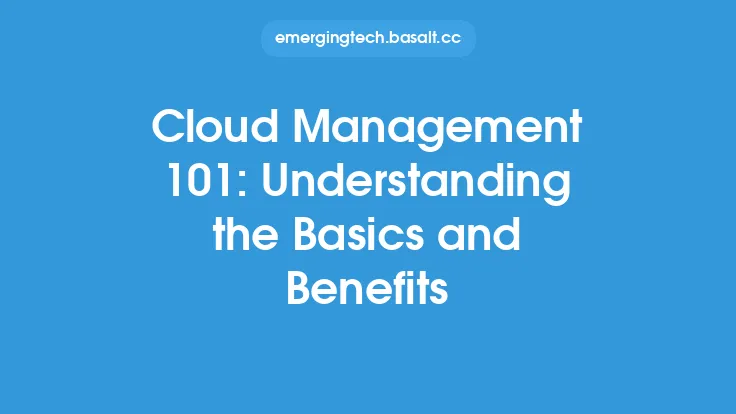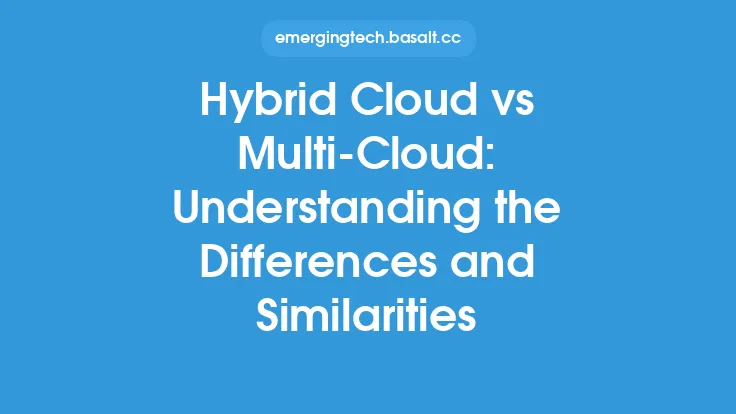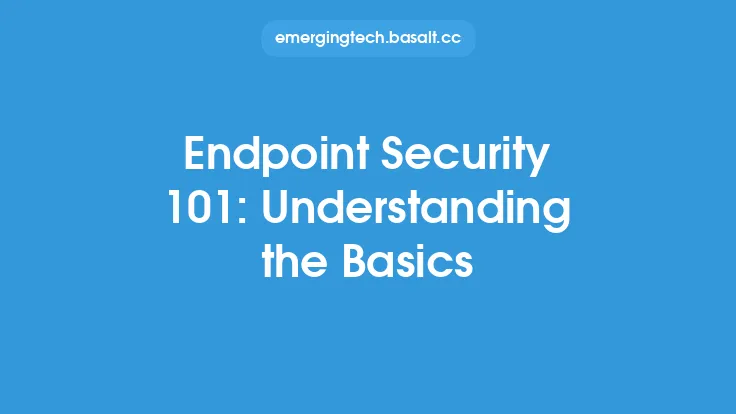In the realm of cloud computing, various deployment models have emerged to cater to the diverse needs of organizations. Among these, the hybrid cloud has gained significant attention for its ability to combine the benefits of different cloud deployment models. At its core, a hybrid cloud is an integrated cloud computing environment that combines public cloud services, private cloud services, and on-premises infrastructure to create a unified, flexible, and scalable IT infrastructure.
Introduction to Hybrid Cloud
A hybrid cloud is essentially a cloud computing environment that uses a combination of on-premises, private cloud, and public cloud services, allowing data and applications to be shared between them. This integration enables organizations to leverage the strengths of each deployment model, creating a more flexible, efficient, and cost-effective IT infrastructure. The hybrid cloud model is particularly useful for organizations that require a high degree of control over their data and applications, as well as the ability to scale up or down to meet changing business needs.
Key Characteristics of Hybrid Cloud
Several key characteristics define a hybrid cloud environment. Firstly, it involves the integration of multiple cloud deployment models, including public, private, and on-premises infrastructure. Secondly, it enables the portability of data and applications between these different environments, allowing for a high degree of flexibility and scalability. Thirdly, hybrid clouds often involve the use of cloud management platforms and tools to manage and orchestrate resources across the different environments. Finally, hybrid clouds typically involve a high degree of automation, allowing organizations to quickly provision and de-provision resources as needed.
How Hybrid Cloud Works
In a hybrid cloud environment, organizations typically use a combination of public cloud services, private cloud services, and on-premises infrastructure to support their IT operations. The public cloud provides a scalable and on-demand infrastructure for applications and data, while the private cloud provides a secure and controlled environment for sensitive data and applications. The on-premises infrastructure, meanwhile, provides a dedicated environment for applications and data that require low latency and high performance. The different environments are integrated using cloud management platforms and tools, which enable the portability of data and applications between them.
Hybrid Cloud Infrastructure
The infrastructure of a hybrid cloud environment typically consists of several key components. These include the public cloud services, such as Amazon Web Services (AWS), Microsoft Azure, or Google Cloud Platform (GCP), which provide a scalable and on-demand infrastructure for applications and data. The private cloud services, such as VMware or OpenStack, which provide a secure and controlled environment for sensitive data and applications. The on-premises infrastructure, which includes servers, storage, and networking equipment, provides a dedicated environment for applications and data that require low latency and high performance. Finally, the cloud management platforms and tools, such as CloudStack or OpenNebula, which enable the management and orchestration of resources across the different environments.
Hybrid Cloud Security
Security is a critical consideration in a hybrid cloud environment, as it involves the integration of multiple environments with different security controls and protocols. To ensure the security of data and applications in a hybrid cloud environment, organizations must implement a range of security measures, including encryption, firewalls, and access controls. They must also ensure that the different environments are properly isolated and segmented, to prevent unauthorized access and data breaches. Additionally, organizations must implement cloud security gateways and cloud access security brokers (CASBs) to monitor and control traffic between the different environments.
Hybrid Cloud Management
Managing a hybrid cloud environment can be complex and challenging, as it involves the integration of multiple environments with different management systems and protocols. To overcome these challenges, organizations can use cloud management platforms and tools, which provide a unified interface for managing and orchestrating resources across the different environments. These platforms and tools can also provide automation, monitoring, and analytics capabilities, enabling organizations to optimize their hybrid cloud environment for performance, efficiency, and cost-effectiveness.
Conclusion
In conclusion, a hybrid cloud is a cloud computing environment that combines public cloud services, private cloud services, and on-premises infrastructure to create a unified, flexible, and scalable IT infrastructure. By integrating multiple deployment models, organizations can leverage the strengths of each environment, creating a more efficient, effective, and cost-effective IT infrastructure. While hybrid clouds offer many benefits, they also present several challenges, including security, management, and complexity. By understanding the basics of hybrid cloud computing, organizations can better navigate these challenges and create a hybrid cloud environment that meets their unique needs and requirements.





